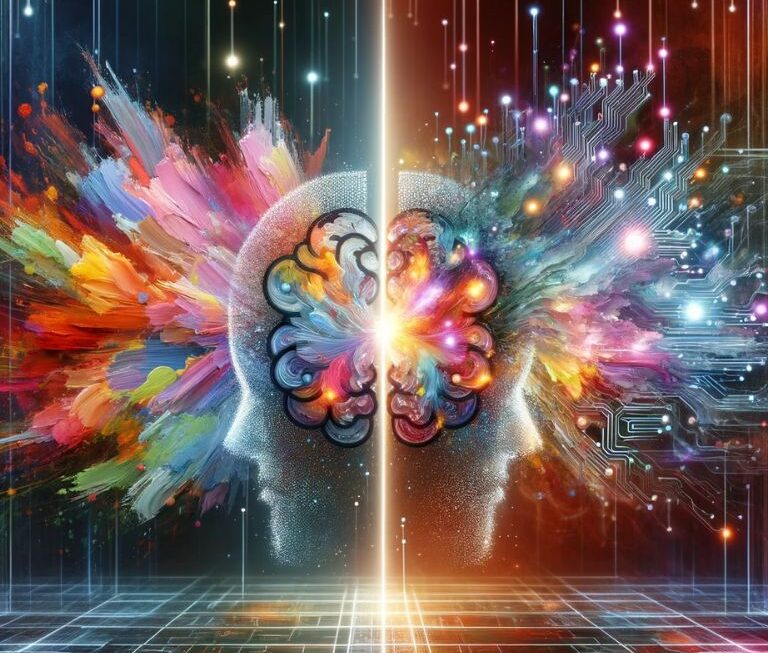The integration of Artificial Intelligence (AI) into the realm of journalism marks a significant leap in the way news is reported, analyzed, and disseminated. This new era of AI reporters is not just a futuristic concept but a present reality that is reshaping the landscape of news media.
The Current State of AI in Journalism
AI in journalism currently manifests in various forms, from algorithms that assist in sorting and analyzing large datasets to sophisticated software capable of writing news articles. These AI reporters are being employed by major news organizations to cover a wide range of topics including finance, sports, and even breaking news. The efficiency and accuracy provided by these AI systems have led to a transformative change in newsrooms, reducing the time taken to publish news from hours to mere minutes.
The Potential of AI Reporters
AI’s impact on journalism extends far beyond efficiency, offering unparalleled capabilities in data analysis. These systems excel at uncovering hidden stories within vast datasets, a task human journalists can’t handle manually. AI reporters are not only faster but also process larger volumes of information, providing comprehensive news coverage. They analyze social media trends, financial reports, and weather data to identify news, enhancing journalists’ insights. Furthermore, AI aids in fact-checking and source verification, crucial in countering misinformation’s rapid spread.
The Human-AI Collaboration in Newsrooms
It’s important to note that AI reporters are not replacing human journalists but rather complementing their efforts. This collaboration between AI and human journalists is creating a synergy where the analytical power of AI is combined with the creative and empathetic aspects of human reporting. AI takes on the heavy lifting of data processing and initial drafting, allowing human journalists to focus on more complex tasks like in-depth analysis, interviews, and storytelling.
| AI Application | Description | Impact on Journalism |
| Automated Writing | AI algorithms generate news articles based on data inputs. | Increases efficiency in news reporting. |
| Data Analysis | AI systems analyze large datasets to identify trends and stories. | Enhances the depth and accuracy of reporting. |
| Fact-Checking | AI tools verify facts and data in real-time. | Reduces misinformation and enhances credibility. |
| Audience Insights | AI analyzes reader preferences and behaviors. | Improves content relevance and engagement. |
The Evolution of News Reporting with AI
Historical Perspective of AI in Journalism
The journey of AI in journalism began with simple automation tasks, such as sorting and categorizing news. Initially, these technologies were primarily used for aggregating content from different sources. As AI evolved, its capabilities expanded, leading to the first experiments in automated content creation. The early 2000s saw a significant shift with the development of more sophisticated algorithms capable of writing basic reports, especially in data-heavy fields like sports and finance.
Key Milestones in the Development of AI Reporters
- Late 1990s to Early 2000s: Introduction of basic AI tools for content aggregation and data sorting in newsrooms.
- Mid-2000s: Development of algorithms for automated financial reporting, where AI began writing simple, data-driven stories.
- 2010s: Major news agencies started experimenting with AI for generating news content. Introduction of natural language generation (NLG) technologies.
- 2015: Launch of advanced AI writing tools, marking the first time AI-generated articles were indistinguishable from human-written ones in specific domains.
- 2018 and Beyond: Expansion of AI capabilities to include complex news writing, data analysis, and even the generation of multimedia content.
How AI Reporters Work

Explanation of AI Technologies Used in Journalism
AI reporters in journalism heavily rely on Natural Language Processing (NLP) and Machine Learning (ML). NLP enables machines to comprehend and generate human language meaningfully, essential for analyzing text data and crafting human-like news reports. ML, a subset of AI, trains algorithms on vast datasets, empowering them to identify trends and noteworthy events within extensive data sources like financial reports and social media feeds, benefiting journalism.
Examples of AI Reporters in Real-World Scenarios
- Automated Sports Updates: AI systems like Wordsmith create sports news reports swiftly by analyzing scores and stats, enabling near-instant post-game publications.
- Financial Insights: Tools like Quill analyze earnings and market trends, producing in-depth financial reports for journalism.
- Breaking News Alerts: AI generates initial alerts for breaking news, later expanded upon by human journalists.
- Multilingual News: AI reporters translate news stories into various languages, broadening global news accessibility.
Advantages of AI in News Reporting
AI has brought a plethora of advantages to the field of journalism:
Speed and Efficiency: AI can process and report news much faster than human journalists, crucial for time-sensitive stories.
Handling Big Data: AI excels at analyzing large datasets, uncovering trends and stories that might be missed by humans.
Cost-Effective: Automating routine reporting tasks can save significant resources, allowing news organizations to allocate their human capital to more investigative and in-depth journalism.
Personalization: AI can tailor news content to individual reader preferences, enhancing user engagement.
Ethical Considerations and Challenges
Discussing the Ethical Implications of AI in Journalism
The integration of AI into journalism raises several ethical considerations. One primary concern is the potential for AI to inadvertently perpetuate biases. Since AI algorithms are trained on existing data, they can reflect and amplify biases present in that data. Additionally, the accountability of AI-generated content poses a significant ethical question. Determining responsibility for errors or misreporting in AI-generated articles can be challenging, as the line between human and machine involvement is often blurred.
Addressing Challenges Like Misinformation and Bias
- Diverse Training Data: Use varied datasets to train AI, preventing bias.
- Algorithm Audits: Regular reviews identify and correct biases.
- Human Oversight: Maintain human input for accuracy and ethics.
- Transparency: Be clear about AI use and accuracy measures.
- Misinformation Defense: Implement rigorous fact-checking for AI content.
- Ethical Guidelines: Develop and follow AI journalism ethics.
Impact on Journalists and Newsrooms

How AI is Changing the Roles of Traditional Journalists
- Shift to Analytical Roles: Journalists are increasingly taking on roles that require analysis and interpretation of AI-generated content, focusing more on adding context and depth to stories.
- Enhanced Investigative Journalism: AI’s ability to process large datasets frees up journalists to engage in more investigative and in-depth reporting.
- New Skill Sets Required: The rise of AI in journalism necessitates new skills for journalists, including data literacy and the ability to collaborate with AI technologies.
- Content Verification: Journalists now play a crucial role in verifying and fact-checking AI-generated content, ensuring its accuracy and reliability.
- Ethical Decision Making: With AI’s integration, journalists are increasingly confronted with ethical decisions related to AI-generated content and its implications.
The Evolving Landscape of Newsrooms with AI Technology
AI’s integration into newsrooms is reshaping their structure, redefining traditional roles. Journalists now collaborate with AI to create richer news stories. Newsrooms are increasingly data-focused, using AI for insights and editorial guidance. This shift isn’t just about efficiency but about elevating journalism’s quality. It nurtures a synergy between human creativity and machine efficacy. As AI evolves, it’s poised to become an integral aspect of journalism, making newsrooms more agile, informed, and inventive.
The AI-Powered Future of Journalism
Predictions and Trends for AI in Journalism
- Advanced AI Writing: Expect AI to create nuanced, diverse articles across a wide range of topics with human-like fluency.
- Personalized News: AI will customize news delivery based on individual preferences and behaviors.
- Investigative Power: AI will play a vital role in investigative journalism, uncovering complex patterns in vast datasets.
- Real-time Reporting: AI enables swift, near-real-time reporting, crucial for dynamic events like live news.
- Interactive Journalism: AI combined with AR and VR offers more immersive journalistic experiences.
- Ethical AI: Anticipate the development of robust ethical standards for AI in journalism.
The Potential Impact on the Global News Landscape
- Information Democratization: AI speeds up global news access, democratizing information.
- Misinformation Fight: AI tools combat fake news, curbing misinformation’s spread.
- Global & Local News: AI adapts news for diverse regions, languages, and cultures.
- New Business Models: AI fosters innovative journalism models like news aggregators and personalization.
- Enhanced Engagement: AI’s personalized, interactive content increases public engagement.
Conclusion
AI is fundamentally reshaping journalism, augmenting efficiency and depth in news gathering, writing, and consumption. This transformative journey presents both challenges and opportunities, ushering in a new era where AI and human creativity collaborate to deliver more precise, diverse, and captivating news content. The future of journalism with AI envisions faster, personalized, context-rich, and globally inclusive news. However, ethical considerations must guide this evolution to preserve journalism’s integrity and credibility. Embracing AI isn’t about replacing humans but enhancing their capabilities, ultimately fostering a more informed, engaged, and interconnected world.




